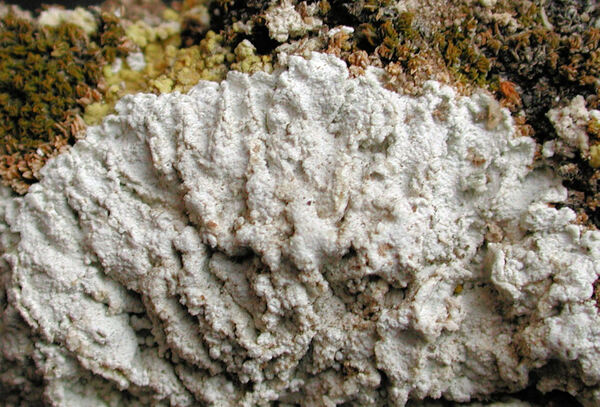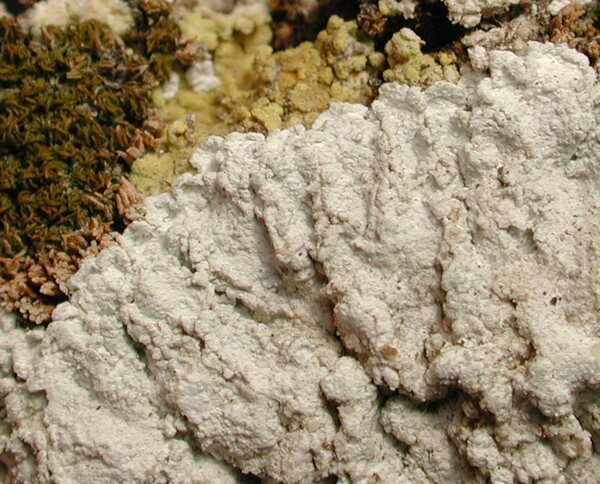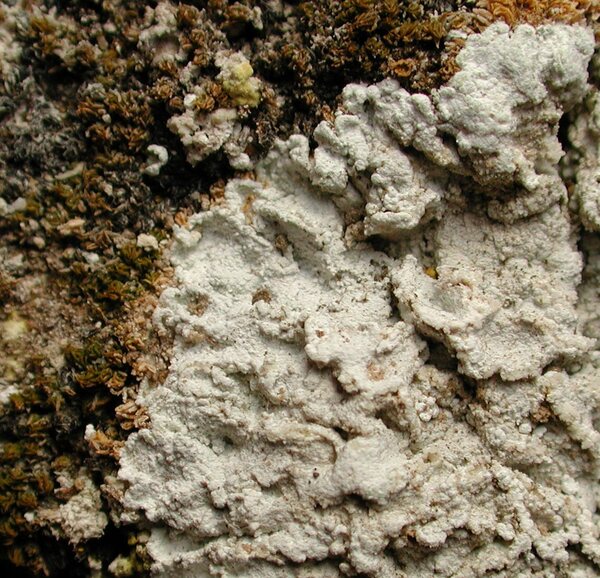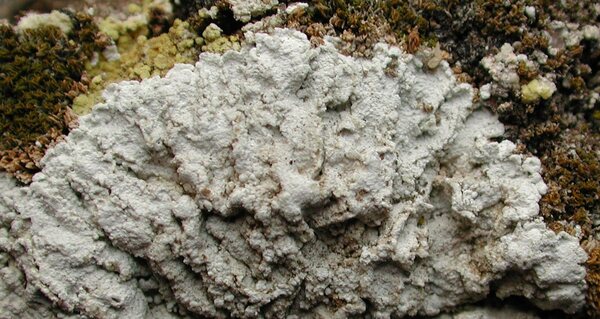Lepraria isidiata (Llimona) Llimona & A. Crespo
in Wirth & al., Guìa de Campo de los Liquenes, Musgos y Hepàticas: 309, 2004. Basionym: Lepraria crassissima var. isidiata Llimona in Vězda - Lich. Sel. Exs., 47: 7 (nr. 1175), 1973.
Synonyms:
Distribution: N - Emil (Nimis & al. 1996, Tretiach & al. 2009, Fariselli & al. 2020). C - Abr (Baruffo & al. 2006), Sar (Leuckert & al. 2004). S - Camp (Baruffo & al. 2006), Cal (Baruffo & al. 2006), Si (Baruffo & al. 2006).
Description: Thallus crustose-subplacodioid to subsquamulose, subleprose, white, pale grey to dark grey in central parts, 0.3-1.4 mm thick, well delimited, forming regular, robust up to 8 cm wide rosettes. Marginal lobes well-developed, pruinose, with raised, thick margins, sometimes with subcorticate, paraplectenchymatous patches; hypothallus usually poorly developed, formed by pale brown, hyphae reacting K-; prothallus absent. Central part of thallus coarsely granular, often slightly convex, loosely attached, with a chalky consistency due to rich deposits of calcium oxalate crystals. Granules isidioid, subspherical to ellipsoid, 0.3-0.5(-0.9) mm thick, with a compact outer layer of heavily encrusted hyphae, and no or poorly developed, 40-50 μm long projecting hyphae, eventually dissolving into soredia-like granules. Medulla white, compact; hypothallus compact, composed of tightly intertwined hyphae. Photobiont chlorococcoid. Spot tests: thallus K+ yellow or K-, C-, KC- or KC+ yellow, P+ reddish orange. Chemistry: chemotype 1: atranorin, protocetraric, fumarprotocetraric and roccellic acids; chemotype 2: atranorin, protocetraric and roccellic acids; chemotype 3: atranorin, fumarprotocetraric and roccellic acids.
Note: on calciferous soil and on mosses in sheltered situations but in sunny and arid habitats, mostly on surfaces wetted by rain, also on gypsum, below the montane belt.
Growth form: Leprose
Substrata: soil, terricolous mosses, and plant debris
Photobiont: green algae other than Trentepohlia
Reproductive strategy: mainly asexual, by soredia, or soredia-like structures (e.g. blastidia)
Commonnes-rarity: (info)
Alpine belt: absent
Subalpine belt: absent
Oromediterranean belt: absent
Montane belt: absent
Submediterranean belt: rare
Padanian area: absent
Humid submediterranean belt: rather rare
Humid mediterranean belt: very rare
Dry mediterranean belt: rare
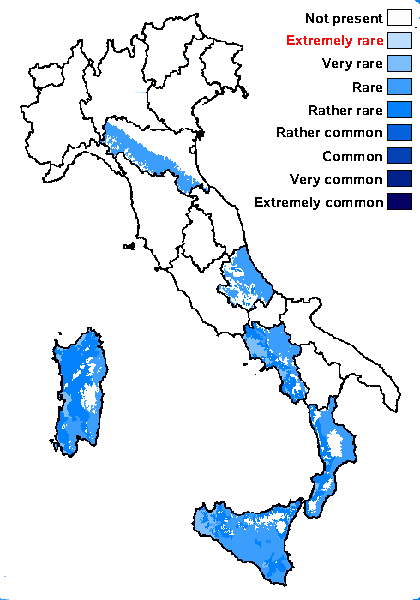
Predictive model
Herbarium samples
Growth form: Leprose
Substrata: soil, terricolous mosses, and plant debris
Photobiont: green algae other than Trentepohlia
Reproductive strategy: mainly asexual, by soredia, or soredia-like structures (e.g. blastidia)
Commonnes-rarity: (info)
Alpine belt: absent
Subalpine belt: absent
Oromediterranean belt: absent
Montane belt: absent
Submediterranean belt: rare
Padanian area: absent
Humid submediterranean belt: rather rare
Humid mediterranean belt: very rare
Dry mediterranean belt: rare

Predictive model
| Herbarium samples |
 Index Fungorum
Index Fungorum
 GBIF
GBIF
